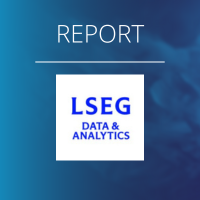FX & Currency Hedging Policy Review
By ComplexCountries
10/05/2023
FX and currency hedging are complex topics, which generate a lot of discussion in most companies. We held this session to see whether members are changing their hedging strategies in response to the recent increase in currency volatility, coming after a period of (relative) stability.

Can’t get enough? Check out these latest items
 https://treasuryxl.com/wp-content/uploads/2025/12/Copy-of-Live-Session-Nomentia-1.png
200
200
treasuryXL
https://treasuryxl.com/wp-content/uploads/2018/07/treasuryXL-logo-300x56.png
treasuryXL2025-12-19 08:49:372025-12-19 09:41:43Recap & Recording: Corporate Treasury in 2026 and beyond
https://treasuryxl.com/wp-content/uploads/2025/12/Copy-of-Live-Session-Nomentia-1.png
200
200
treasuryXL
https://treasuryxl.com/wp-content/uploads/2018/07/treasuryXL-logo-300x56.png
treasuryXL2025-12-19 08:49:372025-12-19 09:41:43Recap & Recording: Corporate Treasury in 2026 and beyond https://treasuryxl.com/wp-content/uploads/2024/01/Template_VACANCY-featured.png
200
200
treasuryXL
https://treasuryxl.com/wp-content/uploads/2018/07/treasuryXL-logo-300x56.png
treasuryXL2025-12-19 08:20:412025-12-19 08:20:41Vacancy Service Operations Manager (Treasury Tech) – Vienna
https://treasuryxl.com/wp-content/uploads/2024/01/Template_VACANCY-featured.png
200
200
treasuryXL
https://treasuryxl.com/wp-content/uploads/2018/07/treasuryXL-logo-300x56.png
treasuryXL2025-12-19 08:20:412025-12-19 08:20:41Vacancy Service Operations Manager (Treasury Tech) – Vienna https://treasuryxl.com/wp-content/uploads/2025/12/FinanceKey-Featured-1.png
200
200
treasuryXL
https://treasuryxl.com/wp-content/uploads/2018/07/treasuryXL-logo-300x56.png
treasuryXL2025-12-18 07:00:142025-12-18 18:17:55Pivoting in FinanceKey: turn raw data into instant insight
https://treasuryxl.com/wp-content/uploads/2025/12/FinanceKey-Featured-1.png
200
200
treasuryXL
https://treasuryxl.com/wp-content/uploads/2018/07/treasuryXL-logo-300x56.png
treasuryXL2025-12-18 07:00:142025-12-18 18:17:55Pivoting in FinanceKey: turn raw data into instant insight https://treasuryxl.com/wp-content/uploads/2025/08/LSEG-BLOGS-featured-10.png
200
200
treasuryXL
https://treasuryxl.com/wp-content/uploads/2018/07/treasuryXL-logo-300x56.png
treasuryXL2025-12-17 07:00:252025-12-16 08:55:07Test Data as a Service
https://treasuryxl.com/wp-content/uploads/2025/08/LSEG-BLOGS-featured-10.png
200
200
treasuryXL
https://treasuryxl.com/wp-content/uploads/2018/07/treasuryXL-logo-300x56.png
treasuryXL2025-12-17 07:00:252025-12-16 08:55:07Test Data as a Service https://treasuryxl.com/wp-content/uploads/2023/03/Treasurer-Search-Logo.png
200
200
treasuryXL
https://treasuryxl.com/wp-content/uploads/2018/07/treasuryXL-logo-300x56.png
treasuryXL2025-12-16 09:27:252025-12-16 09:27:25Interim Treasury Manager @ Treasurer Search
https://treasuryxl.com/wp-content/uploads/2023/03/Treasurer-Search-Logo.png
200
200
treasuryXL
https://treasuryxl.com/wp-content/uploads/2018/07/treasuryXL-logo-300x56.png
treasuryXL2025-12-16 09:27:252025-12-16 09:27:25Interim Treasury Manager @ Treasurer Search https://treasuryxl.com/wp-content/uploads/2025/06/Nirav-Interview-1.png
200
200
treasuryXL
https://treasuryxl.com/wp-content/uploads/2018/07/treasuryXL-logo-300x56.png
treasuryXL2025-12-16 07:00:212025-12-15 12:30:31Stablecoins: The Silent Revolution Is Already Here
https://treasuryxl.com/wp-content/uploads/2025/06/Nirav-Interview-1.png
200
200
treasuryXL
https://treasuryxl.com/wp-content/uploads/2018/07/treasuryXL-logo-300x56.png
treasuryXL2025-12-16 07:00:212025-12-15 12:30:31Stablecoins: The Silent Revolution Is Already Here https://treasuryxl.com/wp-content/uploads/2024/02/Featured_Treasurer-Search.png
200
200
treasuryXL
https://treasuryxl.com/wp-content/uploads/2018/07/treasuryXL-logo-300x56.png
treasuryXL2025-12-15 07:00:062025-12-19 08:28:55The Future of Financial Messaging: Migrating from MT940 to ISO 20022
https://treasuryxl.com/wp-content/uploads/2024/02/Featured_Treasurer-Search.png
200
200
treasuryXL
https://treasuryxl.com/wp-content/uploads/2018/07/treasuryXL-logo-300x56.png
treasuryXL2025-12-15 07:00:062025-12-19 08:28:55The Future of Financial Messaging: Migrating from MT940 to ISO 20022 https://treasuryxl.com/wp-content/uploads/2025/09/Nomentia-BLOGS-featured-5.png
200
200
treasuryXL
https://treasuryxl.com/wp-content/uploads/2018/07/treasuryXL-logo-300x56.png
treasuryXL2025-12-12 12:54:092025-12-12 13:07:57Nomentia Announces Leadership Transition to Drive Next Phase of Growth
https://treasuryxl.com/wp-content/uploads/2025/09/Nomentia-BLOGS-featured-5.png
200
200
treasuryXL
https://treasuryxl.com/wp-content/uploads/2018/07/treasuryXL-logo-300x56.png
treasuryXL2025-12-12 12:54:092025-12-12 13:07:57Nomentia Announces Leadership Transition to Drive Next Phase of Growth https://treasuryxl.com/wp-content/uploads/2023/03/Treasurer-Search-Logo.png
200
200
treasuryXL
https://treasuryxl.com/wp-content/uploads/2018/07/treasuryXL-logo-300x56.png
treasuryXL2025-12-11 14:07:112025-12-18 11:06:12Sales Director Investments @ Treasurer Search
https://treasuryxl.com/wp-content/uploads/2023/03/Treasurer-Search-Logo.png
200
200
treasuryXL
https://treasuryxl.com/wp-content/uploads/2018/07/treasuryXL-logo-300x56.png
treasuryXL2025-12-11 14:07:112025-12-18 11:06:12Sales Director Investments @ Treasurer Search



The quick answer was that few, if any, participants are reviewing their policies for this reason. Several are indeed reviewing their policies, but this is part of an ongoing cycle, under which most people revisit their policies regularly, to make sure they are still appropriate. There is consensus that a hedging policy, once decided, should be consistently followed – though many of the policies described allow for some degree of judgment around a central approach.
For the rest, the discussion below is one of our more difficult reads, but maybe more worthwhile for that. It is long and complex: I will not try to cover all the points. The policies implemented show a lot of variety:
Bottom line: currency is a complex topic, which has to be managed. There are many different views and approaches, and different answers will be appropriate for different businesses and different situations. But there are constants, notably the need to have a policy, and to follow that policy – and revisit all policies from time to time. In any case, good management of currency is essential to manage profitability and reduce earnings volatility.
This report was produced by Monie Lindsey based on two treasury peer calls chaired by Damian Glendinning.